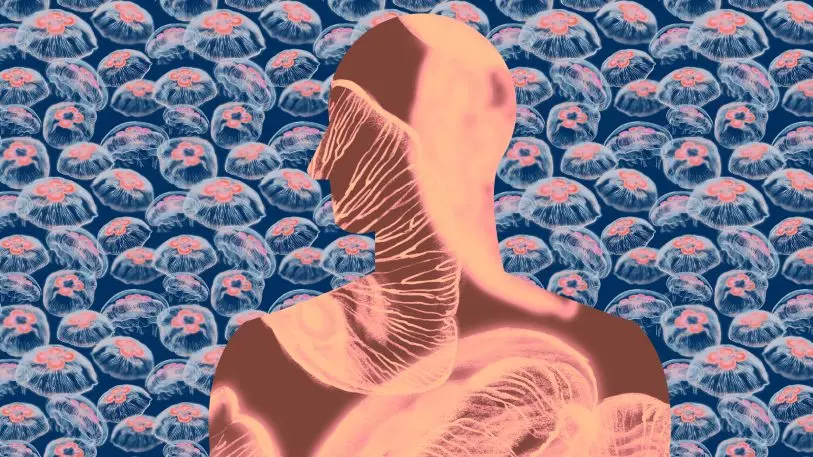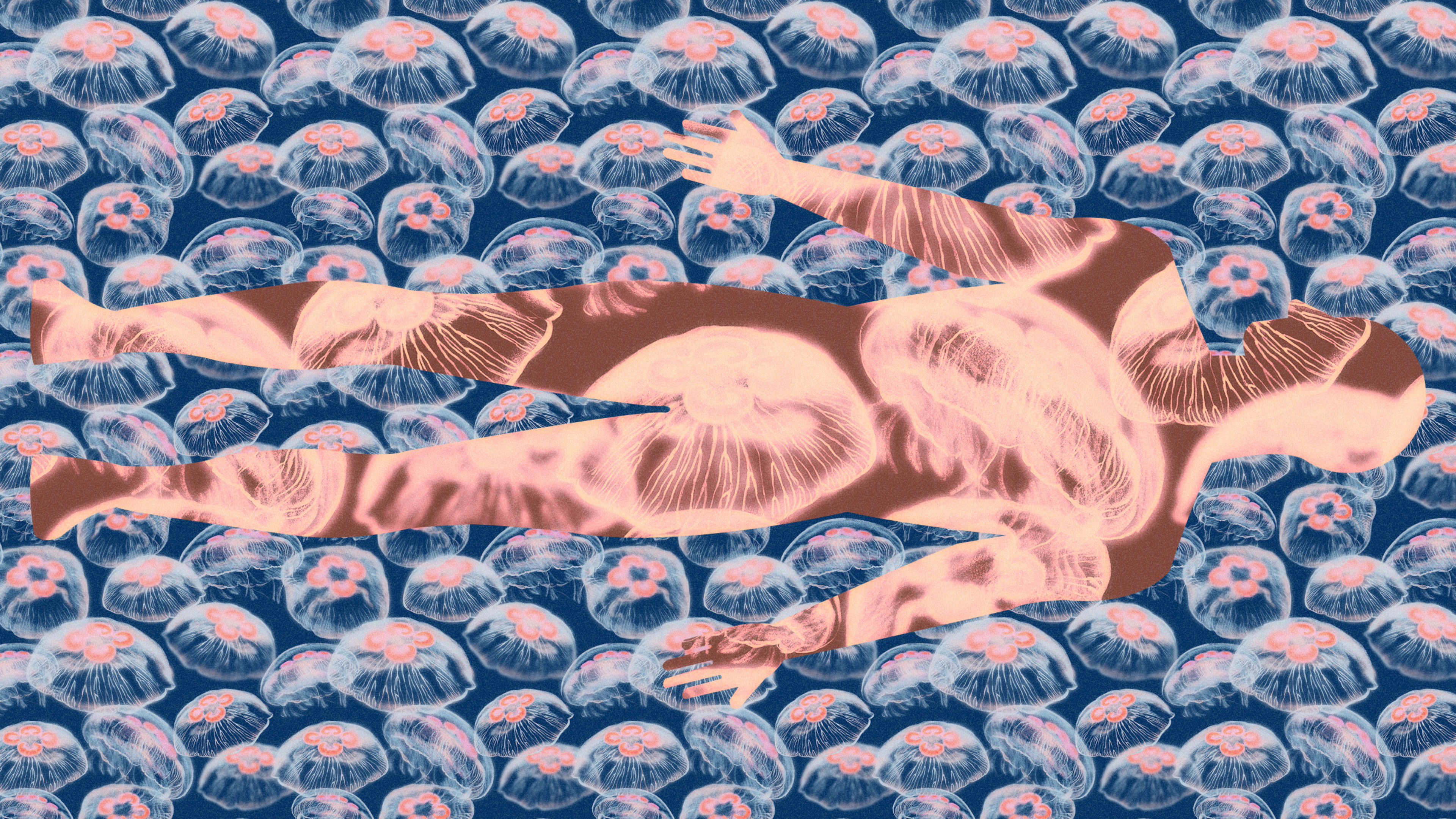Beach-goers haunted by nasty sea stings may be pleased to know there could be some karma in store for jellyfish. They’re currently on track to be used to generate human skin.
That’s because the structural characteristics of a certain species of jellyfish are remarkably close to those of human skin, meaning they can be transformed into skin scaffolds, the Scientific Research Center of Yucatán found. The primary focus was reportedly to find a fix for diabetic foot ulcers, but the synthetic implants could also be used for loss of skin caused by other injuries, burns, or surgeries.
“Both its composition and structure resemble the architecture of human dermic tissue,” the study says. Most notably, it’s the structure and composition of the bell—the bulbous head of the jellyfish—that can easily coexist with human cells. “There are several methods to design skin substitutes, and all are equally valid,” says Nayeli Rodríguez-Fuentes, one of the researchers. “However, our proposal is to use a local natural resource. We take nature’s design and apply it to treat wounds.”
The jellyfish the scientists are using is the Cassiopea andromeda, commonly known as the upside-down jellyfish. These creatures live an upturned life just as their name suggests, bell down on the sea floor, tentacles pointing up, which makes the jellyfish resemble a harmless anemone. Camouflage is only an added benefit, however; they perform headstands to allow more exposure to the sun for the algae that they host on their bodies, similar to corals. Not only can the flapping tentacles pack a venomous punch to sea life swimming by, but it was recently discovered that the species can release mucus bombs into surrounding water that produce stinging slime.

What makes the jellyfish useful is its collagen, the proteinous substance in living things that provides structure. Collagen has been extracted and tested from the skin of cows and pigs, but due to risks like bovine diseases, scientists have shown interest in marine animals like octopus, sponges, squid, and jellyfish, which are abundant and have the right architectural composition. But freeze-drying jellies has proved an efficient method of producing the skin scaffolds, which could mean lower costs in the long-term for patients in need of implants.
For the study’s in-vitro testing, 100 jellies were fished from the Gulf of Mexico, off the north coast of Yucatán. They dunked the bells of the 100 jellyfish in a salt solution, then added hydrogen peroxide, which dehydrated and bleached the structures. After the liquid incubation, they were found still biocompatible after the cell properties were destroyed by 70%. Human skin fibroblasts, or cells that produce collagens and connective tissues, were then planted into the skin scaffolds, and were found to adhere and proliferate effectively and safely.
The test concluded that the upside-down jellies “can be potentially used for skin tissue reengineering,” but more tests must follow, including on living organisms.
Lucas Brotz, a jellyfish scientist at the Institute for Oceans and Fisheries at the University of British Columbia, says a potential advantage is that these kinds of jellies are easily grown in lab settings, unlike free-swimming species, which require special tanks. This route also allows scientists to control the supply and demand and exact timing, and keep the process cost-effective. “It is usually costlier to remove huge amounts of jellyfish and ship them to a location,” Brotz says, “than it would be to simply grow them in a lab as they’re needed.”
Rodríguez-Fuentes agrees that the goal will be to cultivate the creatures sustainably on marine farms, therefore not affecting ecosystems, an operation that should be easy to expand. “We believe that obtaining jellyfish scaffolding can be scalable at the industrial level, which is what we are currently developing,” she says.
The downside, of course, is that lab growth wouldn’t serve a double purpose in thinning the increasing invasive Cassiopea blooms in the wild. Jellyfish blooms are spiking across the world’s oceans, as predators die off and the water warms up. These jellies are not even native to Mexico but have since surged there. So many companies have been researching and marketing ways to harvest them, in applications far beyond just medical science. Ideas in development include using their mucus for fertilizer and their flesh for sanitary pads, and simply eating them like potato chips.
Recognize your brand’s excellence by applying to this year’s Brands That Matter Awards before the early-rate deadline, May 3.
